Tech on the Trail
I’m just going to talk for a minute about the tech I plan to bring with me on the trail. My friends who hiked the AT over a decade ago didn’t have cell phone technology as ubiquitously as we do today. I’ve read that about 85% of the trail has coverage (Verizon). I think most people carry at least a cheap Walmart phone for safety in case they need to call for help or let someone know where they are.
There are some disadvantages to tech on the trail though. It’s heavy, for one. People quibble about ounces when hiking the AT, and arguably a phone is several ounces that are questionably necessary. Add to that an extra power bank, headphones, charging plug, and cables, and suddenly it starts to add up.
There are advantages to it too though, which may offset the weight. Being able to call ahead for reservations or a ride into town is a huge help. Before cell phones, it was all hitch hiking, which has its own charms, sure. But I think it will be nice to know I’ve got a spot with my name on it when I arrive at the hostel later. There are also several map apps that make it much easier to know where you are, where the next shelter is, water sources, and alternate (Blue Blaze) trails, not to mention finding your way around town. If you opt to use this exclusively instead of a guidebook, it helps offset the weight of your phone. (Unfortunately I’ve decided to bring both.)
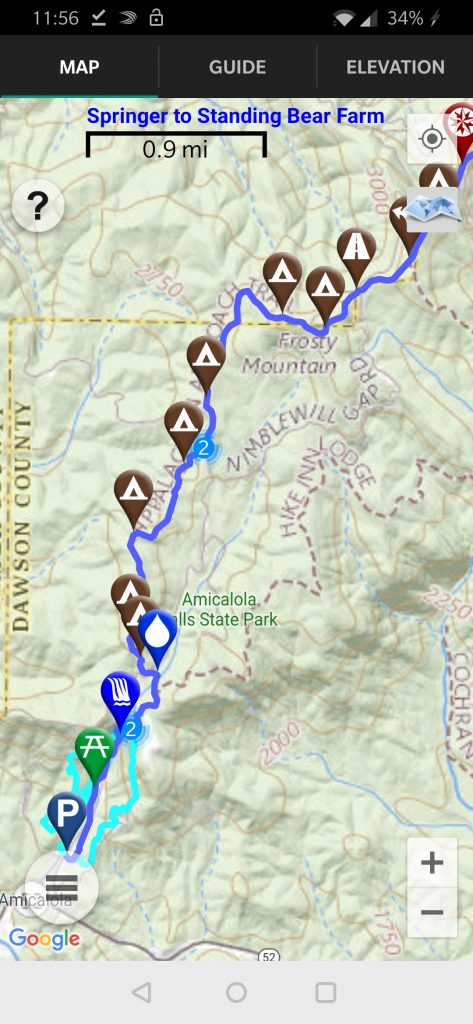
Guthooks app map of the beginning of the AT. 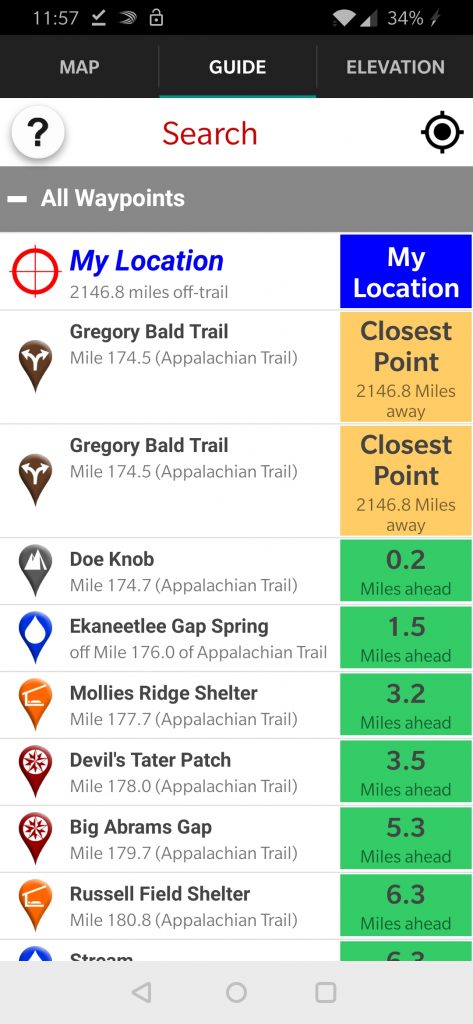
Guthooks “Guide” view shows all waypoints. Apparently I’m a little off-trail. 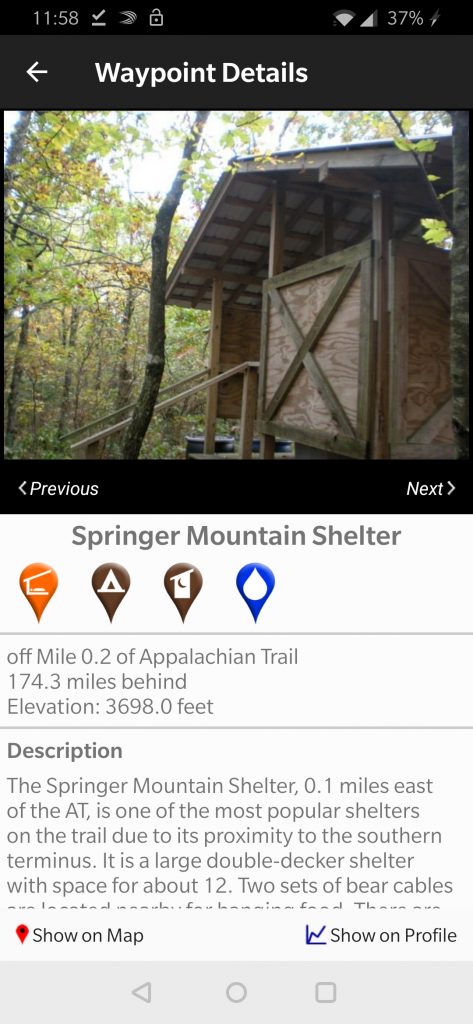
Photos of each of the waypoints help recognize and evaluate campsites, water sources, and shelters. 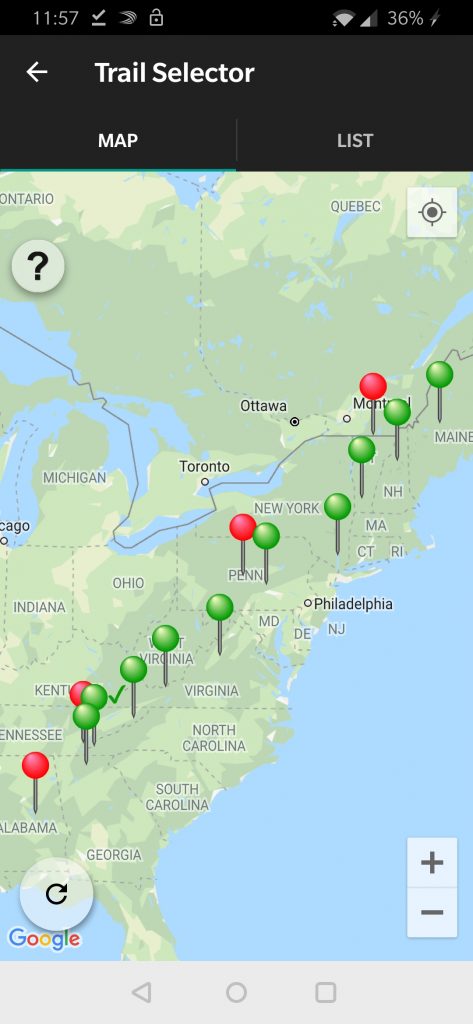
Each pin is a separate map. This shows the entire length of the trail.
Two apps I installed are the Guthooks AT Guide which provides locations of the above items in map or list format. There’s also the HikerBot app which apparently is only for Android. It’s free, and uses “crowdsourced” data that anyone can edit like an AT Wiki map. It doesn’t seem to be as active as I had hoped though, so I sprung for the $60 Thru Hiker Special to download all of the offline maps in the Guthooks app.
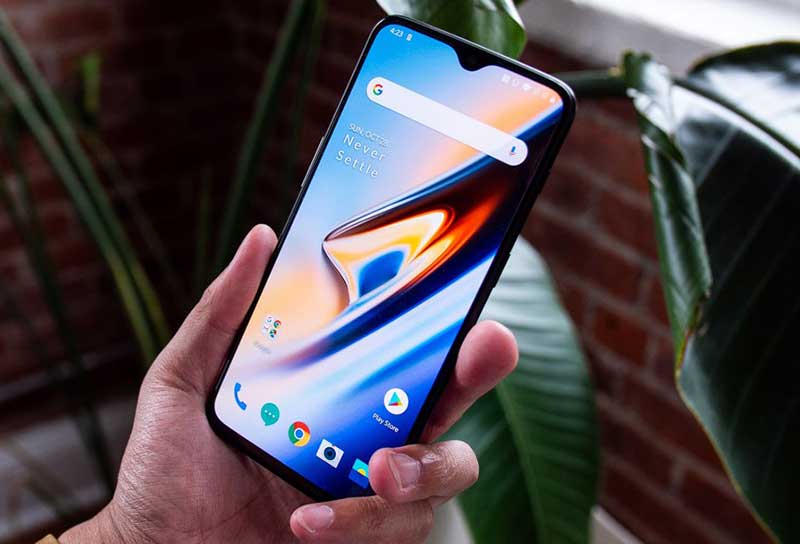
Since my old phone’s battery was not holding a charge for more than a few hours, it was time for me to upgrade anyway. Being an Android user I was torn between the Google Pixel 3 and the OnePlus 6t, a new budget phone with impressive stats for the price. While the Google Pixel 3 is IP68 water and dust proof, which is an attractive feature, and boasts one of the best cameras on a phone today, I saved myself $400 and went with the OnePlus 6t. I’ll just have to keep it in a plastic bag (it’s “water repellent”) and avoid dunking it for too long. But man the battery life of the 3700 mAh cell lasts a solid 2-1/2 days with normal use, which is very impressive. I’m sure it will last even longer when left in airplane mode (or off) for most of the time.
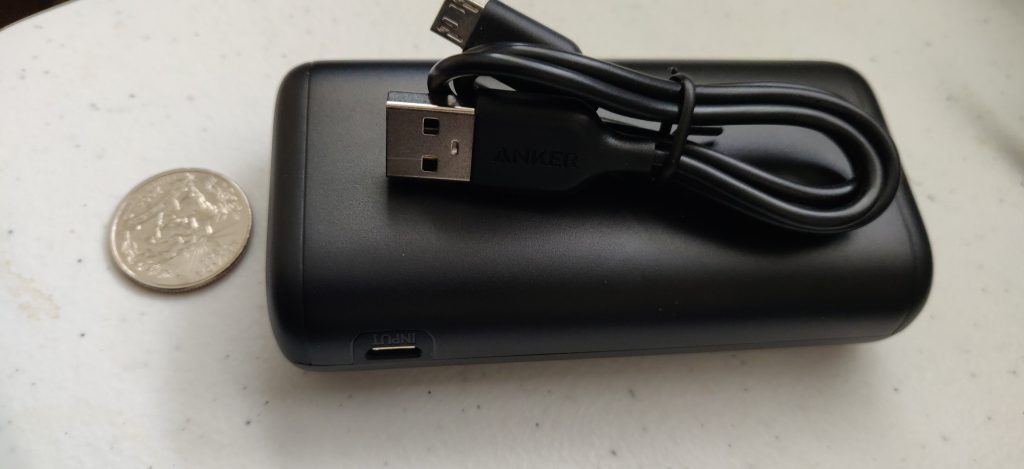
Speaking of batteries, most people also carry some sort of power bank external charger. They’re pretty cheap on Amazon, ranging from $15 to $35 and capacities of 6000 mAh or so up to 26,000 mAh for real power users. The high capacity ones definitely add to your pack, weighing in at almost a pound. Given the long battery life on my phone, I decided 10,000 mAh was the best tradeoff between weight (6 oz) and recharges. I’m able to charge my phone a little over two times with it. If I have a full charge on my phone going on the trail and two extra charges on my power bank I should have power when I need it for over a week easily. It also has the benefit of being able to recharge my headlamp which is also USB rechargeable.
Speaking of headlamps, it kind of classifies as tech given the specs. I decided to buy a new one because my old one was not rechargeable. I ended up settling on a Cree Ultra-lightweight 1.6 oz rechargeable headlamp with a 1200 mAh battery that will last up to 48 hours between charges and will plug into my power bank if needed. It is IPX5 water proof which is also good. The only feature I wish it had which I thought about it retrospect is a red light also, which I think is useful when rolling into a shelter late to avoid bothering the other campers who might be sleeping already.
That’s all I wanted to say about tech on the trail. My goal is to stay disconnected as much as possible, except as needed and to update my blog here and snap an occasional picture or video. I suspect that while typing on my phone my blog posts will become significantly less wordy too, which I’m sure will come as a relief to anyone who has actually read this far.